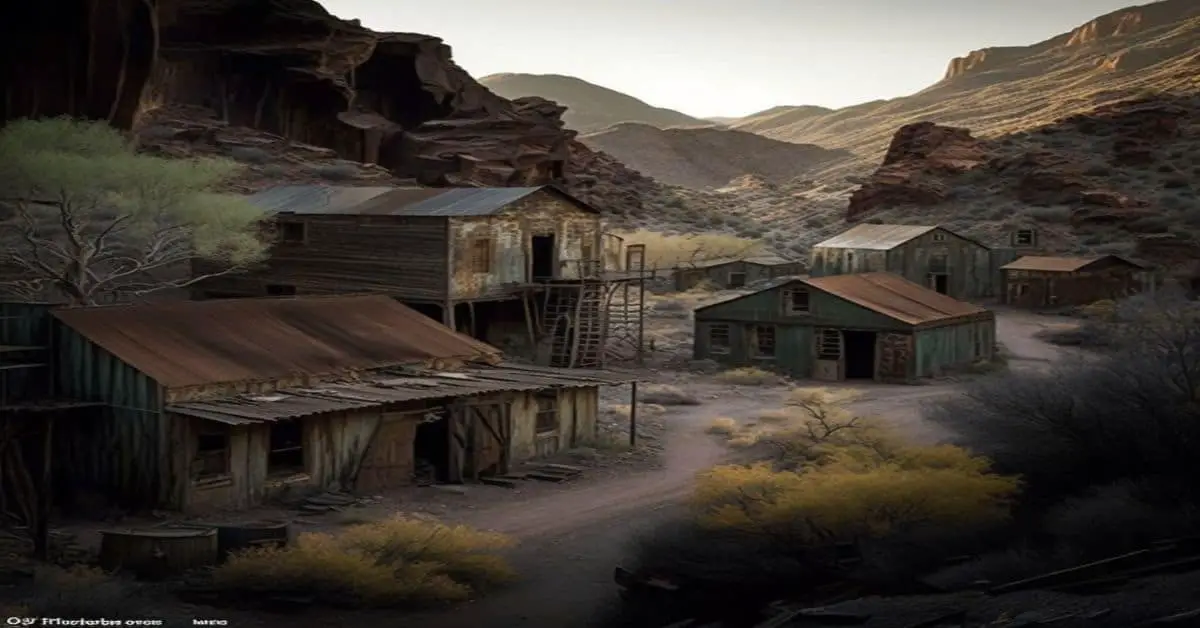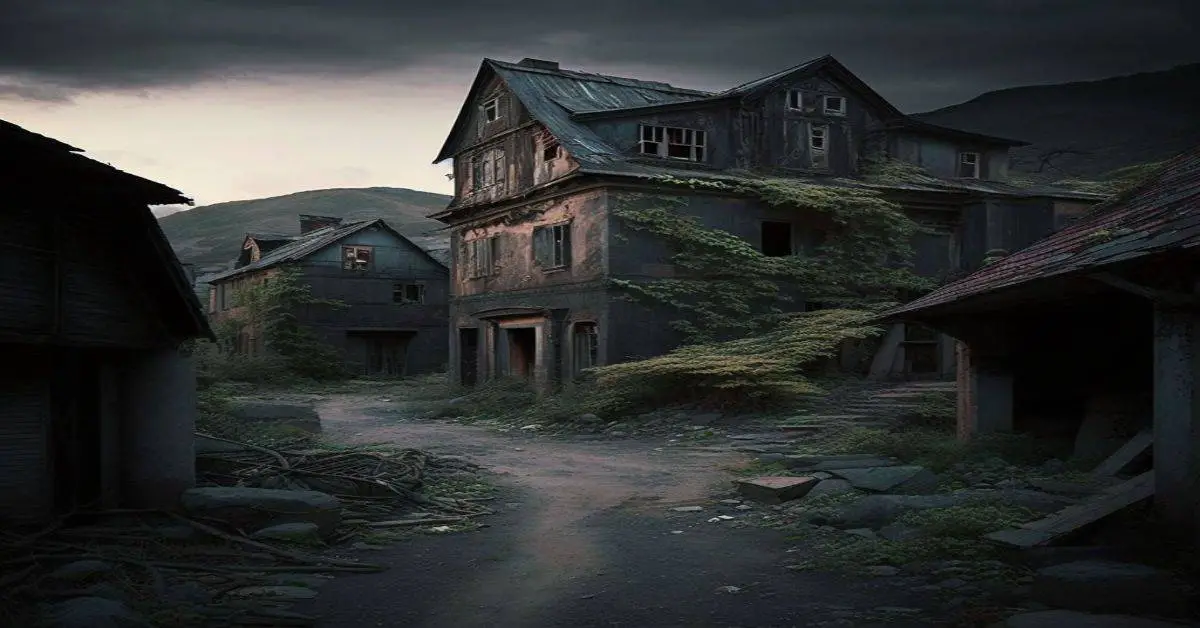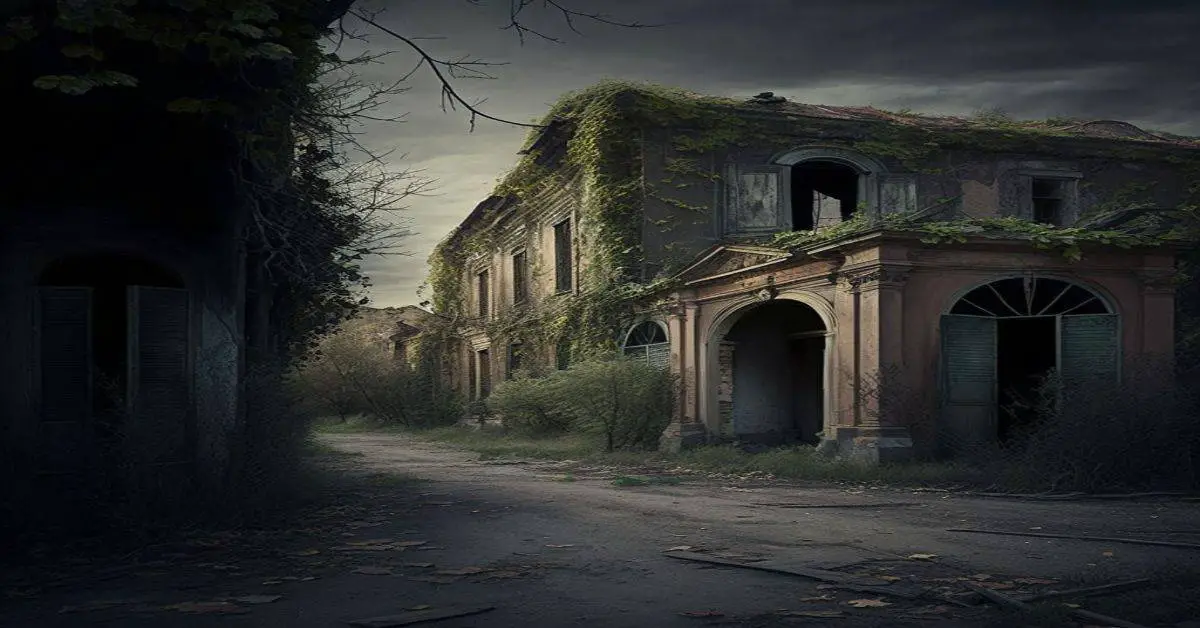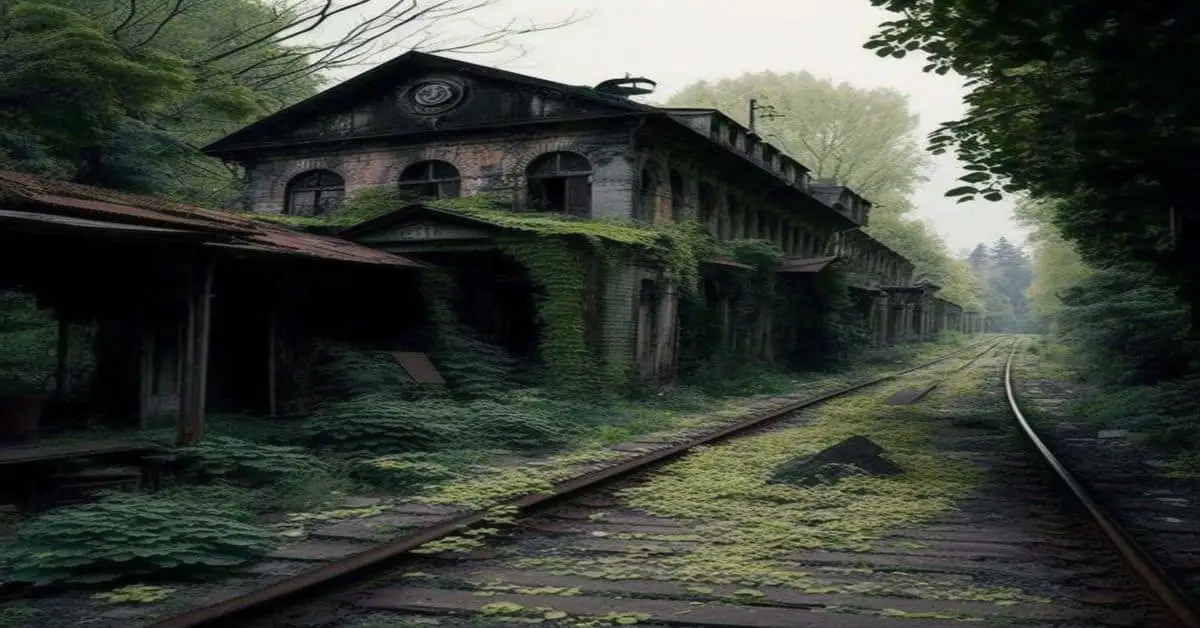Amidst the vast expanse of the Wyoming wilderness, a forgotten ghost town echoes with the remnants of its past glory. Once a bustling hub for steam power locomotives, Bitter Creek remains a solitary reminder of a bygone era. Its abandoned buildings and rusted structures testify to the technological advancements that led to its decline.
Bitter Creek was founded by the Union Pacific Railroad in Sweetwater County, Wyoming, and was once a vital link in transporting goods across the United States. However, with the advent of modern transportation systems, the town began to lose its relevance, and its population dwindled.
Today, the remains of one old building, a water tank, and a few foundations remain in the once-thriving town. Despite its disappearance, Bitter Creek attracts history enthusiasts and curious travelers looking to glimpse the past.
In this article, we will delve into the history of Bitter Creek and explore its remains as a reminder of its past.
Key Takeaways
- Bitter Creek was founded by the Union Pacific Railroad and served as a vital transportation link.
- Only one old building, a water tank, and a few foundations remain, which attract history enthusiasts and curious travelers.
- The climate can be harsh and unpredictable, but the natural surroundings offer a unique and picturesque landscape, making spring and early fall the ideal times to visit.
- Bitter Creek has local legends of ghost sightings and strange occurrences, adding to the town’s mystique and allure.
Location and History
Located 9 miles south of I-80 from exit #142, Bitter Creek was once a bustling railroad town founded by the Union Pacific Railroad.
The town served as a water and whistle stop for the railroad, and it had a significant role in transporting goods and people across the country.
However, with the end of steam power and the rise of technological advancements, Bitter Creek’s significance faded, and the town became a ghost town.
The remains of Bitter Creek today serve as a metaphor for its decline.
Only a small number of foundations and a crumpled up water tank remain, reminding visitors of the town’s past glory and its eventual demise.
Despite the town no longer existing, Bitter Creek still holds a significant place in history, as it was once a hub for transportation and commerce in the region.
Remains and Climate
The existing remnants in the area consist of a single dilapidated building, a collapsed water tank, and several remaining foundations, serving as a reminder of the town’s past as a Union Pacific Railroad water and whistle-stop that eventually faded with the introduction of newer technologies. Visitors can explore these artifacts and imagine life in the bustling railroad town. However, it is important to note that the remains are in a state of disrepair and caution should be taken when exploring them.
Meanwhile, the climate in the region can be harsh and unpredictable with cold and gusty winters and hot and arid summers, making spring and early fall the ideal times to visit. Despite the weather challenges, the natural surroundings of Bitter Creek offer a unique and picturesque landscape. The stark beauty of the surrounding plains and the nearby Red Desert make it a popular destination for outdoor enthusiasts and history buffs alike.
Visiting Bitter Creek
Accessing the remnants of this former Union Pacific Railroad stop requires driving 9 miles south from exit #142 on Bitter Creek Road, but it is worth noting that Bitter Creek was once a bustling town with a population of over 500 people.
Today, the remains of the town consist of one old building, a crumpled-up water tank, and a small number of foundations. However, for history enthusiasts, exploring these ruins is a fascinating experience that offers a glimpse into the past of this Wyoming ghost town.
Aside from the physical remains, Bitter Creek also has its fair share of local legends. Visitors can hear stories of ghost sightings and strange occurrences that are said to have taken place in the town.
While these accounts cannot be verified, they add an element of mystery and intrigue to the already fascinating history of Bitter Creek. For those interested in exploring the ruins and learning more about the town’s history and legends, the best time to visit is in the spring or early fall when the weather is mild.
With its unique combination of history and mystery, Bitter Creek provides an unforgettable experience for those who venture out to explore its remains.
Frequently Asked Questions
What was the population of Bitter Creek at its peak?
The population growth of Bitter Creek at its peak is unknown. Economic factors such as the decline of steam power and technological advancements led to the town’s demise. The remains offer a glimpse into the town’s past.
What was the main industry in Bitter Creek besides the railroad?
Bitter Creek’s main industry, besides the railroad, was mining. Coal mining was the most prominent, with several mines in the area. Agriculture was also present, with ranching significantly contributing to the local economy.
Are there any legends or ghost stories associated with Bitter Creek?
There are no documented haunted tales or supernatural sightings associated with Bitter Creek. The town’s decline was due to technological advancements, and its remains serve as a reminder of its past rather than its paranormal activity.
What efforts have been made to preserve or restore the remaining structures in Bitter Creek?
What measures have been taken to conserve the remaining structures in Bitter Creek? Despite its historical significance, the town’s current state of preservation is limited to minimal stabilization efforts due to lack of funding and interest.
Has Bitter Creek ever been featured in any movies or literature?
Bitter Creek, a Wyoming Ghost Town, has been featured in literature such as “Bitter Creek Junction” by Jon Talton. Its cultural significance lies in its portrayal of the decline of small railroad towns and its historical significance as a reminder of a bygone era.



